Birds come in all shapes and sizes, and one of the most fascinating types is the small bird with a long beak. These birds are not only cute and charming but also very interesting to learn about. Their long beaks serve many purposes, from finding food to building nests. In this article, we will explore the unique features, habits, and habitats of these special birds. Whether you are a bird lover or just curious about nature, you’ll enjoy discovering more about these tiny creatures with their remarkable beaks.
10 Small Birds with Long Beaks
| No. | Bird Name | Description |
|---|---|---|
| 1. | Hummingbird | Very small, colorful bird; uses long beak to drink nectar. |
| 2. | Kingfisher | Brightly colored bird; uses long beak to catch fish. |
| 3. | Sunbird | Tiny bird with shiny feathers; uses long beak to sip flower nectar. |
| 4. | Hoopoe | Small bird with crown of feathers; long beak for digging insects. |
| 5. | Bee-eater | Colorful bird; uses long beak to catch bees and other insects. |
| 6. | Avocet | Small wading bird; long, thin beak for sweeping through water. |
| 7. | Curlew | Small shorebird; curved beak for probing mud for food. |
| 8. | Woodpecker | Small bird; uses long, strong beak to peck at wood. |
| 9. | Wryneck | Small bird related to woodpeckers; long beak for catching ants. |
| 10. | Jacana | Small water bird; long beak for feeding in shallow water. |
10 Small Birds with Long Beaks
Birds with long beaks are fascinating creatures. Their beaks are not just for show; they have evolved to help these birds survive and thrive in their environments. Here, we will explore ten small birds with long beaks, detailing their unique features, habits, and habitats. This article will help you understand why these birds are so special and how they use their remarkable beaks in their daily lives.
Hummingbird: A Tiny Bird with Amazing Skills
Scientific Name: Trochilidae
Size: Small, about 3–5 inches (7.5–13 cm)
Weight: Very light, 0.07–0.7 ounces (2–20 grams)
Lifespan: 3–5 years in the wild
Diet: Nectar (sweet liquid from flowers), tiny bugs, and spiders
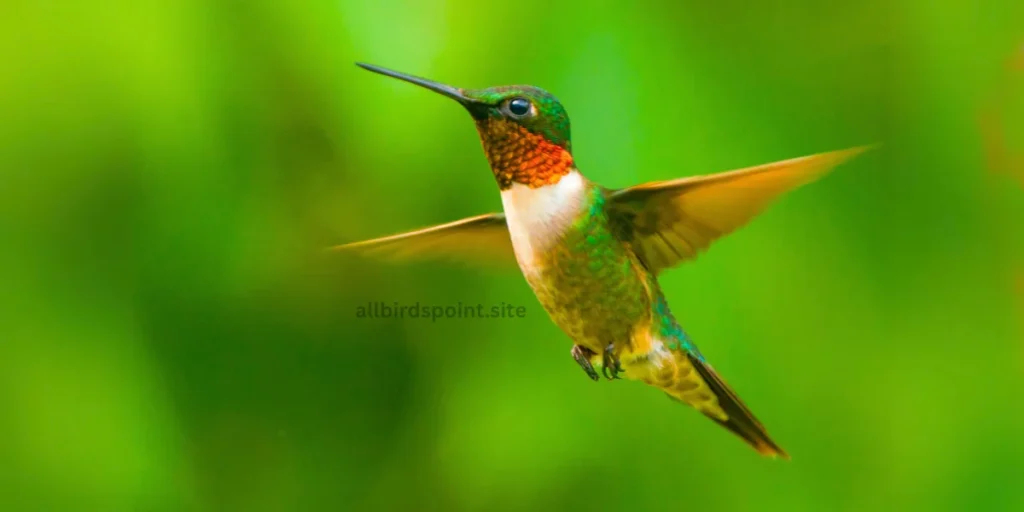
The hummingbird is a tiny bird that lives in North and South America. It is famous for being very colorful and fast. Even though it’s small, the hummingbird is very special because it can do things other birds can’t.
What Does a Hummingbird Look Like?
Hummingbirds are known for their bright, shiny feathers. They come in many colors like red, green, blue, and purple. When the light hits them, the feathers can look even more colorful and shiny. Males are usually more colorful than females.
Where Do Hummingbirds Live?
Hummingbirds live in forests, gardens, and meadows where there are lots of flowers. They are found in warm places like tropical forests and even in high mountains. Some species live in North America and others in South America. They love places with many colorful flowers because they need flowers for food.
What Do Hummingbirds Eat?
Hummingbirds drink nectar, a sweet juice from flowers. Their long, thin beaks help them reach deep into flowers to get the nectar. They also use their long tongues to sip the nectar. The sugar in the nectar gives them lots of energy to fly.
But nectar isn’t the only thing they eat. Hummingbirds also eat tiny bugs and spiders. These little insects help the hummingbird stay strong and healthy.
How Do Hummingbirds Fly?
Hummingbirds are amazing fliers! They can hover in the air like a helicopter, fly backward, and even go upside down. Their wings beat very fast—sometimes up to 80 times per second. This helps them stay in front of a flower without landing.
Some hummingbirds travel a long way. For example, the Ruby-throated Hummingbird flies thousands of miles to stay in warm places during the winter. Even though they are small, they are very strong and can travel far.
How Long Do Hummingbirds Live?
Hummingbirds usually live for 3 to 5 years, but some live up to 10 years. They are small but tough birds. However, they have to watch out for bigger birds and other animals that might want to eat them.
Hummingbirds Help Flowers Grow
Hummingbirds are important for pollination. When they drink nectar from flowers, they move pollen from one flower to another, helping the flowers grow seeds and new plants. This makes hummingbirds very important for nature.
Hummingbirds are tiny, colorful, and full of energy. They make our gardens and forests beautiful while helping plants grow. These little birds are a wonderful part of the natural world!
| Attribute | Description |
|---|---|
| Common Name | Hummingbird |
| Scientific Name | Family Trochilidae |
| Lifespan | 3 to 5 years (up to 10 years) |
| Beak Length | 1 to 4 inches (2.5 to 10 cm) |
| Diet | Nectar, small insects, spiders |
Kingfisher: The Bird with a Sharp Beak and Amazing Colors
Scientific Name: Alcedinidae
Size: 4–18 inches (10–45 cm)
Weight: 0.3–14 ounces (10–400 grams)
Lifespan: 6–10 years in the wild
Diet: Fish, insects, frogs, and small animals
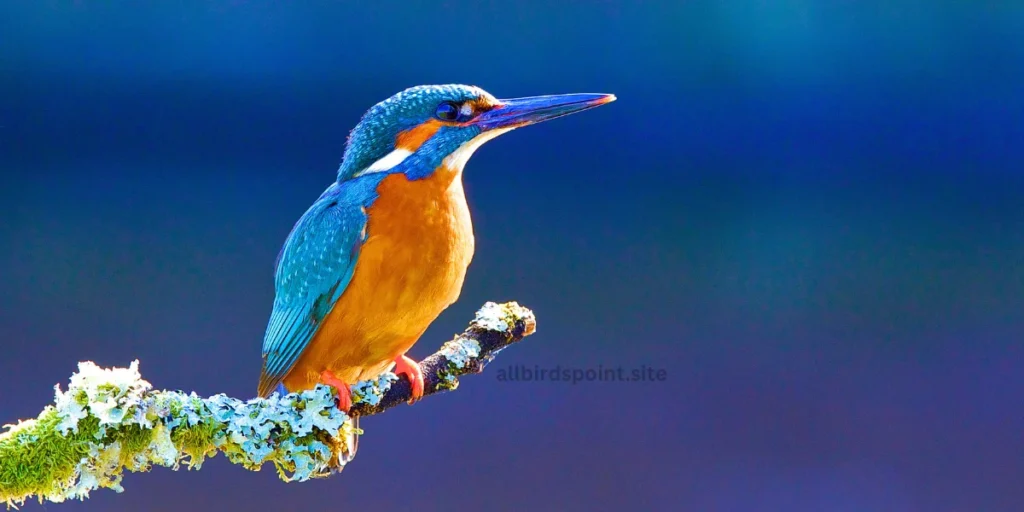
The kingfisher is a bright, colorful bird that lives near rivers, lakes, and ponds. It is known for its sharp beak and incredible ability to catch fish from the water. Kingfishers are fast and very good at hunting for food.
What Does a Kingfisher Look Like?
Kingfishers are famous for their beautiful feathers. They can be bright blue, green, orange, or brown. The colors shine in the sunlight, making them easy to spot. They have short tails, long sharp beaks, and small feet.
Their beaks help them catch fish, and their colors help them hide from other animals.
Where Do Kingfishers Live?
Kingfishers like to live near water. You can find them near rivers, lakes, ponds, and even in forests. They dig holes in the ground or riverbanks to make their nests. They like to be close to water because that’s where they hunt for food.
What Do Kingfishers Eat?
Kingfishers are expert hunters. They use their sharp beaks to catch fish, which is their favorite food. They sit on a branch or rock, looking at the water, and when they see a fish, they dive quickly and grab it with their beak.
But kingfishers don’t just eat fish. They also eat insects, frogs, and other small animals. This makes them good hunters both in the water and on land.
How Do Kingfishers Hunt?
Kingfishers have very sharp eyes, which help them see fish in the water. They sit quietly, watching, and when they spot a fish, they dive into the water like a fast arrow. Their long beaks help them catch the fish quickly.
Once they catch a fish, they fly back to their perch and hit the fish against a rock to make it easier to eat.
How Long Do Kingfishers Live?
Kingfishers can live for 6 to 10 years in the wild. They are tough birds that know how to take care of themselves, but they must be careful of bigger animals that might want to catch them.
Kingfishers and Their Beautiful Homes
Kingfishers help keep the balance of nature by eating fish and insects. Their nests are often made in holes along the riverbanks, where they lay their eggs. These little homes are safe places for baby kingfishers to grow.
Kingfishers are bright, fast, and clever birds. They bring beauty to rivers and lakes, and their amazing hunting skills make them very special birds in the natural world!
| Attribute | Description |
|---|---|
| Common Name | Kingfisher |
| Scientific Name | Family Alcedinidae |
| Lifespan | 6 to 10 years |
| Beak Length | 2 to 4 inches (5 to 10 cm) |
| Diet | Fish, insects, small amphibians |
Sunbird: The Tiny Bird with Beautiful Colors
Scientific Name: Nectariniidae
Size: 3.5–5 inches (9–13 cm)
Weight: 5–15 grams (0.18–0.53 ounces)
Lifespan: Around 6–8 years in the wild
Diet: Nectar, small insects, and spiders

The sunbird is a tiny, colorful bird found in tropical regions, especially in Africa, Asia, and Australia. Known for their dazzling feathers, sunbirds are often seen sipping nectar from flowers, just like hummingbirds. Even though they are small, they bring a lot of color and energy to the places they live.
What Does a Sunbird Look Like?
Sunbirds are famous for their bright, shiny feathers. The males are usually more colorful than the females. They can have feathers in colors like metallic green, purple, blue, and yellow. Females are less colorful, usually with more dull or brown feathers.
Their slender, curved beaks are perfectly shaped for reaching deep into flowers to drink nectar.
Where Do Sunbirds Live?
Sunbirds live in tropical forests, gardens, and woodlands. They love places that have a lot of flowers because flowers give them the nectar they need for food. They are often found in warm areas across Africa, Asia, and Australia. Some species also live on islands, enjoying the sunny weather and plenty of blossoms.
What Do Sunbirds Eat?
Sunbirds mainly eat nectar from flowers. Their long, thin beaks help them reach the sweet nectar deep inside. They hop from flower to flower, drinking nectar, which gives them a lot of energy to fly around.
Besides nectar, they also eat small insects and spiders. These tiny creatures give them the protein they need to stay strong and healthy.
How Do Sunbirds Feed?
Sunbirds are very active. They fly quickly from one flower to another, using their curved beaks to drink nectar. They are not as good at hovering like hummingbirds, so they often perch on flowers or branches to feed.
Their bright colors help them blend in with the flowers they visit, making them harder for predators to spot.
How Long Do Sunbirds Live?
Sunbirds can live for around 6 to 8 years in the wild. Even though they are small, they are quick and smart, which helps them survive.
Sunbirds and Their Role in Nature
Just like hummingbirds, sunbirds help pollinate flowers. When they drink nectar, they carry pollen from one flower to another, helping plants grow. This makes sunbirds an important part of their environment.
Sunbirds are tiny, but they have big personalities. With their bright colors and love for flowers, they bring joy and beauty to tropical forests and gardens. These little birds are a delightful sight in the natural world!
| Attribute | Description |
|---|---|
| Common Name | Sunbird |
| Scientific Name | Family Nectariniidae |
| Lifespan | 2 to 4 years |
| Beak Length | 1 to 2 inches (2.5 to 5 cm) |
| Diet | Nectar, insects, spiders |
Hoopoe: The Bird with a Crown of Feathers
Scientific Name: Upupa epops
Size: 9.8–12.6 inches (25–32 cm)
Weight: 46–89 grams (1.6–3.1 ounces)
Lifespan: Around 10 years in the wild
Diet: Insects, larvae, and small reptiles
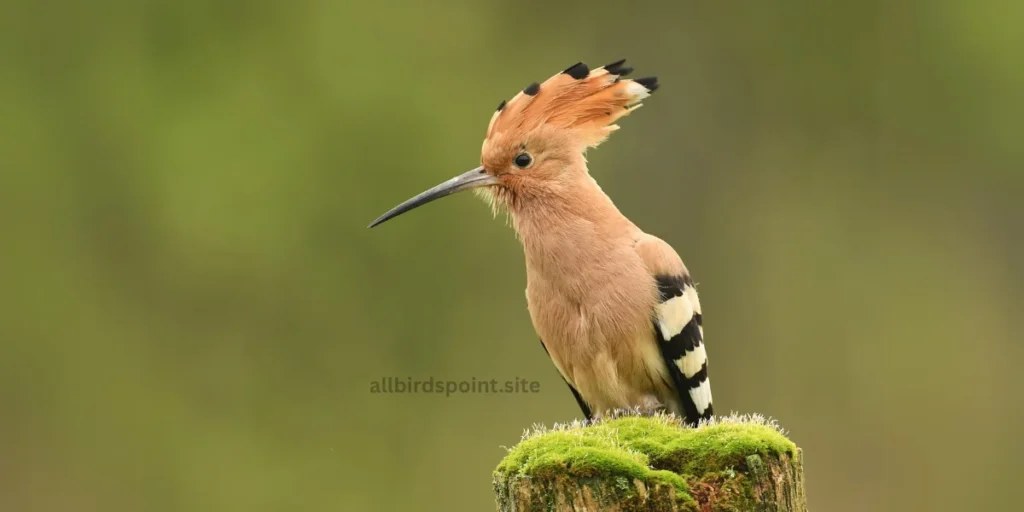
The hoopoe is a unique and striking bird known for its colorful feathers and a distinctive crown of feathers on its head. It is found in parts of Europe, Asia, and Africa and is easily recognizable by its beautiful appearance and curious behavior.
What Does a Hoopoe Look Like?
The hoopoe is a medium-sized bird with pinkish-brown feathers on its body and striking black-and-white stripes on its wings and tail. Its most noticeable feature is the fan-like crest on its head. This crest can be raised into a crown of feathers when the bird is excited or feels threatened.
The hoopoe also has a long, thin beak that curves slightly downward, which helps it find food in the ground.
Where Do Hoopoes Live?
Hoopoes live in a wide range of places, from open fields and savannas to woodlands and farmlands. They prefer areas with soft soil, where they can dig for food. You can find them across Europe, Asia, Africa, and even in Madagascar. Some hoopoes migrate to warmer regions during the winter.
They often build their nests in tree holes, walls, or even cliffs, creating a safe place to raise their young.
What Do Hoopoes Eat?
Hoopoes have a diet that mostly consists of insects and larvae. They use their long beaks to dig in the ground and find bugs like beetles, crickets, and ants. Sometimes, they also eat small reptiles, like lizards or frogs.
Their beak is specially designed to reach into the soil and find food hidden beneath the surface. This makes them expert hunters of ground-dwelling insects.
How Do Hoopoes Hunt for Food?
The hoopoe’s long, curved beak helps it hunt by digging into the ground. It uses its beak to probe into the dirt, finding insects and worms hidden underground. Once it finds food, the hoopoe uses its beak to pull it out and eat it.
Hoopoes are often seen walking around fields or gardens, searching for food, and they can even flick their prey into the air before swallowing it.
How Long Do Hoopoes Live?
Hoopoes can live up to 10 years in the wild. They are hardy birds that are good at avoiding predators. However, they have to watch out for larger animals and birds that might try to catch them.
Hoopoes and Their Special Crown
One of the most amazing things about the hoopoe is its crown of feathers. When the hoopoe feels excited or scared, it raises its crest into a beautiful fan shape, showing off its colorful feathers. This display can help it scare off predators or impress other birds.
Hoopoes in Nature
The hoopoe is not only a beautiful bird but also plays an important role in controlling insect populations. By eating bugs and larvae, they help keep gardens and farmlands healthy. Hoopoes are loved by birdwatchers because of their unique looks and interesting behavior.
The hoopoe is a truly special bird, with its crown of feathers, striking colors, and excellent hunting skills. Whether walking in fields or showing off its crest, the hoopoe is a fascinating part of the natural world!
| Attribute | Description |
|---|---|
| Common Name | Hoopoe |
| Scientific Name | Upupa epops |
| Lifespan | 5 to 10 years |
| Beak Length | 2 to 3 inches (5 to 8 cm) |
| Diet | Insects, small reptiles, seeds |
Bee-Eater: The Colorful Bird That Loves to Catch Bees
Scientific Name: Meropidae
Size: 6–12 inches (15–30 cm)
Weight: 20–60 grams (0.7–2.1 ounces)
Lifespan: Around 5–10 years in the wild
Diet: Mainly bees, wasps, and other flying insects
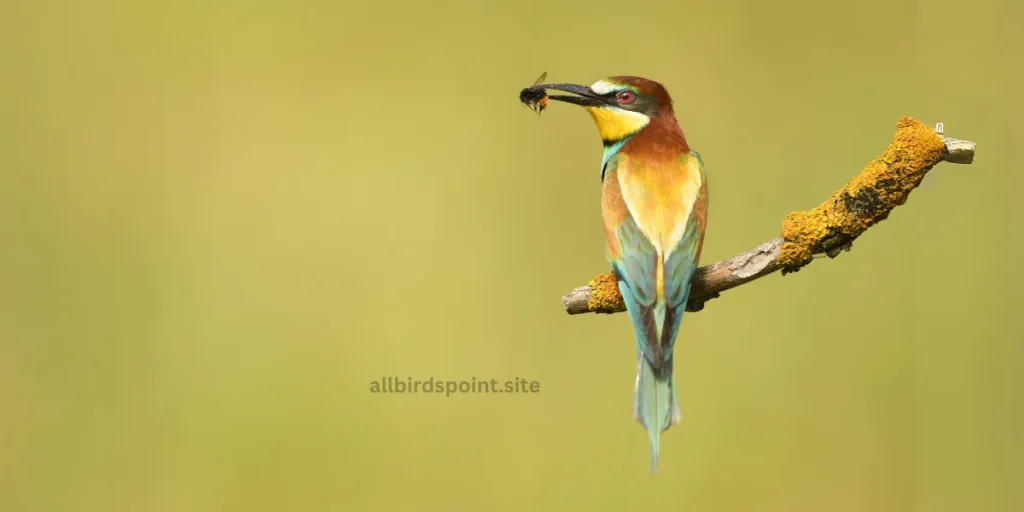
The bee-eater is a brightly colored bird known for its amazing ability to catch and eat bees and other flying insects. Found in parts of Africa, Europe, Asia, and Australia, these birds are loved for their bright feathers and playful flight.
What Does a Bee-Eater Look Like?
Bee-eaters are small to medium-sized birds with bright, colorful feathers. They often have shades of green, blue, yellow, orange, and red on their bodies. Their colorful feathers make them one of the most beautiful birds in the sky. Bee-eaters have long, slender bodies and a curved beak that helps them catch insects in flight.
Their wings are long and pointed, making them fast and agile fliers. This is very useful when they’re chasing fast-moving bees and wasps!
Where Do Bee-Eaters Live?
Bee-eaters like to live in open areas like grasslands, savannas, woodlands, and farmlands where there are plenty of insects to eat. Some species live near rivers or lakes because these places are full of insects flying around.
You can find bee-eaters in many places across Africa, Asia, and Europe. Some species even live in Australia. Many bee-eaters migrate to warmer places when the weather gets cold, traveling long distances to find food.
What Do Bee-Eaters Eat?
As their name suggests, bee-eaters mainly eat bees and wasps, but they also eat other flying insects like dragonflies, butterflies, and flies. Their sharp eyesight allows them to spot their prey from far away.
When they catch a bee or wasp, bee-eaters use a clever trick: they hit the insect against a branch or the ground to remove its sting before eating it. This keeps them safe from getting stung while enjoying their meal.
How Do Bee-Eaters Catch Their Food?
Bee-eaters are expert fliers. They fly quickly through the air, chasing after bees and other insects. Once they catch an insect in mid-air, they return to their perch, where they remove the insect’s sting before eating it.
Bee-eaters usually hunt during the day, when bees and other flying insects are most active. They often work together in groups, making hunting more successful and social.
How Long Do Bee-Eaters Live?
Bee-eaters can live for around 5 to 10 years in the wild. They are strong and fast, which helps them survive, but they also face dangers from larger birds and other animals that might try to catch them.
Bee-Eaters’ Colorful Homes
Bee-eaters usually make their nests in sandy banks, riverbanks, or soft soil. They dig tunnels into the ground to create a safe place for their eggs. These tunnels are often found in colonies, where many bee-eaters nest together.
They are social birds, often flying and hunting in groups. Their colorful feathers and lively behavior make them a favorite sight for birdwatchers.
Bee-Eaters in Nature
Bee-eaters play an important role in controlling the populations of insects, especially bees and wasps. By eating these insects, they help keep the balance in nature. Even though they eat bees, bee-eaters don’t harm bee populations because they only catch a small number compared to how many bees are out there.
The bee-eater is a fascinating bird, known for its bright colors, amazing flying skills, and clever way of catching and eating bees. These birds bring beauty and energy to the skies wherever they fly!
| Attribute | Description |
|---|---|
| Common Name | Bee-eater |
| Scientific Name | Family Meropidae |
| Lifespan | 6 to 10 years |
| Beak Length | 1.5 to 2 inches (4 to 5 cm) |
| Diet | Bees, wasps, other flying insects |
Avocet: The Graceful Bird with a Curved Beak
Scientific Name: Recurvirostra
Size: 16–18 inches (40–45 cm)
Weight: 10–15 ounces (300–450 grams)
Lifespan: Around 10–15 years in the wild
Diet: Small aquatic insects, crustaceans, and worms
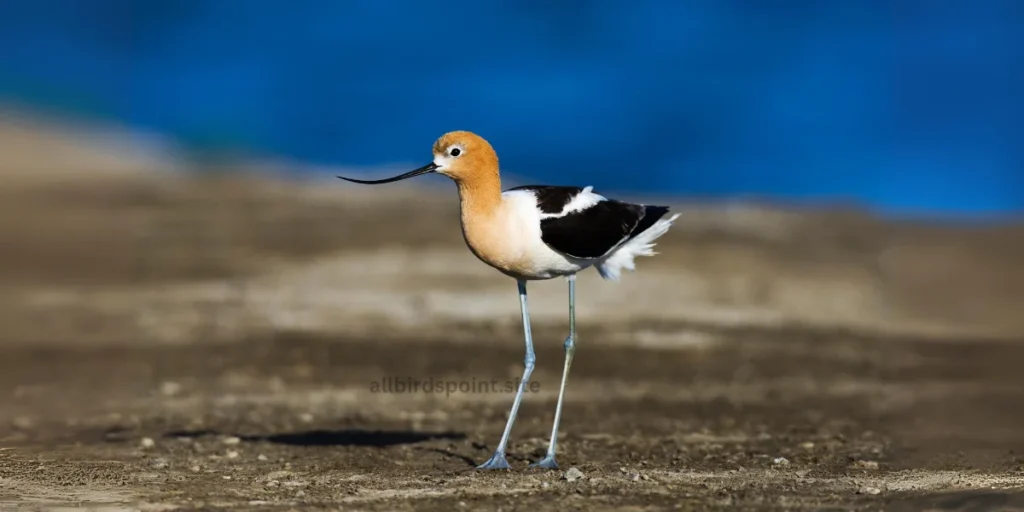
The avocet is a tall, elegant bird known for its long, thin, and upward-curved beak. It is commonly found near wetlands, lakes, and shallow waters in Europe, Asia, Africa, and North America. The avocet’s graceful movements and unique feeding style make it a fascinating bird to watch.
What Does an Avocet Look Like?
Avocets are slender birds with long legs and striking black-and-white feathers. They are easy to recognize because of their thin, upward-curved beak, which they use to sweep through the water while feeding. Their long legs help them wade through shallow water to find food.
Their elegant black-and-white plumage gives them a clean, crisp appearance, making them stand out in their watery habitats.
Where Do Avocets Live?
Avocets live in areas with shallow water, such as wetlands, coastal lagoons, and mudflats. They need these watery environments to find their food. You can see them in places like salt marshes or along the edges of lakes and rivers.
They are migratory birds, meaning they travel to warmer places when the weather gets colder. During winter, they may be found in southern Europe, Africa, and Asia, while in summer, they nest in northern regions.
What Do Avocets Eat?
Avocets eat small creatures found in the water, such as insects, crustaceans, and worms. Their long, curved beaks help them sweep through the water, catching these tiny animals.
They use a special feeding technique called sweeping. They move their heads from side to side, skimming the water’s surface with their beaks to catch food. This method makes it easy for them to gather their meals while wading through shallow water.
How Do Avocets Feed?
The avocet’s curved beak is perfect for its unique feeding style. It wades through the water with its long legs and sweeps its beak from side to side, collecting small insects and animals from the water and mud.
Avocets are often seen feeding in groups, moving gracefully through the water together, which helps them catch more food.
How Long Do Avocets Live?
Avocets can live for 10 to 15 years in the wild. They are strong and adaptable birds, but they do face threats from predators like larger birds and mammals. However, their ability to live in wetlands helps them stay safe and find plenty of food.
Avocets’ Nesting and Breeding
Avocets make their nests on the ground, usually near water. They build their nests out of grass and other soft materials, often in shallow depressions in the ground. Both parents take care of the eggs and the young chicks.
Avocet chicks are born with the ability to walk and feed themselves shortly after hatching, making them very independent from a young age.
Avocets in Nature
Avocets are important birds in wetland ecosystems. By eating small aquatic creatures, they help keep the balance in these watery environments. They are also a symbol of conservation, as their habitats are often protected to help preserve wetland areas.
The avocet is a beautiful and graceful bird, known for its elegant looks and skillful feeding technique. Watching an avocet sweep through the water with its curved beak is a mesmerizing sight, making it one of nature’s most fascinating wading birds!
| Attribute | Description |
|---|---|
| Common Name | Avocet |
| Scientific Name | Family Recurvirostridae |
| Lifespan | 10 to 15 years |
| Beak Length | 2.5 to 4 inches (6 to 10 cm) |
| Diet | Aquatic insects, crustaceans, small fish |
Curlew: The Bird with the Long Curved Beak
Scientific Name: Numenius
Size: 19–23 inches (48–58 cm)
Weight: 1–2.5 pounds (450–1,100 grams)
Lifespan: Around 10–20 years in the wild
Diet: Insects, worms, small crabs, and other invertebrates

The curlew is a large, wading bird known for its distinctive long, curved beak. It is found in various habitats across Europe, Asia, Africa, and North America. The curlew’s gentle call and unique appearance make it one of the most recognizable birds in wetland areas.
What Does a Curlew Look Like?
Curlews are large birds with long legs and brownish feathers covered in spots and streaks. Their most striking feature is their long, downward-curved beak, which is perfect for digging deep into the mud or sand to find food. The females usually have slightly longer beaks than the males.
Their long, slim beak is one of the most noticeable features that helps identify them, especially when they are feeding.
Where Do Curlews Live?
Curlews are found in a variety of habitats, including coastal marshes, mudflats, grasslands, and farmlands. They need areas with soft soil or muddy ground where they can easily probe for food. Some species of curlew also migrate long distances, spending the summer in northern regions and moving south to warmer climates during the winter.
Curlews are often spotted along the shores of rivers, lakes, and coasts, where they search for food in shallow water or soft mud.
What Do Curlews Eat?
Curlews use their long beaks to find food in the mud or sand. They eat a variety of small creatures, including insects, worms, small crabs, and other invertebrates. Their long beaks allow them to reach deep into the ground to find food that other birds cannot reach.
Some species of curlew also eat small fish and berries when they are available, especially during the breeding season.
How Do Curlews Feed?
Curlews have a unique feeding technique. They use their long beaks to probe deep into the mud or soil, feeling around for hidden creatures like worms and insects. Once they locate their food, they use their beaks to pull it out of the ground.
Their ability to reach food deep below the surface gives them an advantage over other birds, allowing them to find food in places where others can’t.
How Long Do Curlews Live?
Curlews can live for 10 to 20 years in the wild, with some living even longer. They are hardy birds, able to survive in various environments, but they face threats from habitat loss and predators such as foxes and large birds of prey.
Curlews’ Nesting and Breeding
Curlews usually build their nests on the ground, often in open grasslands or moors. Their nests are simple scrapes in the ground, lined with grass and leaves. The female typically lays 2–4 eggs, and both parents take turns incubating the eggs until they hatch.
Curlew chicks are born with the ability to walk and feed themselves almost immediately, though they stay close to their parents for protection.
Curlews in Nature
Curlews play an important role in the ecosystem by keeping populations of insects, worms, and other small creatures in check. Unfortunately, some species of curlew are threatened due to the loss of wetlands and grasslands, which are their primary habitats.
Conservation efforts are underway in many areas to protect the curlew and its habitat, as these birds are important to maintaining the health of their ecosystems.
The curlew is a fascinating bird with its long, curved beak and elegant appearance. Whether probing in the mud for food or filling the air with their gentle calls, curlews are a vital part of the landscapes they inhabit.
| Attribute | Description |
|---|---|
| Common Name | Curlew |
| Scientific Name | Genus Numenius |
| Lifespan | 10 to 20 years |
| Beak Length | 4 to 8 inches (10 to 20 cm) |
| Diet | Insects, worms, small crustaceans |
Woodpecker: The Bird That Drills into Trees
Scientific Name: Picidae
Size: 6–18 inches (15–45 cm)
Weight: 0.7–12 ounces (20–340 grams)
Lifespan: 4–12 years in the wild
Diet: Insects, tree sap, seeds, and nuts
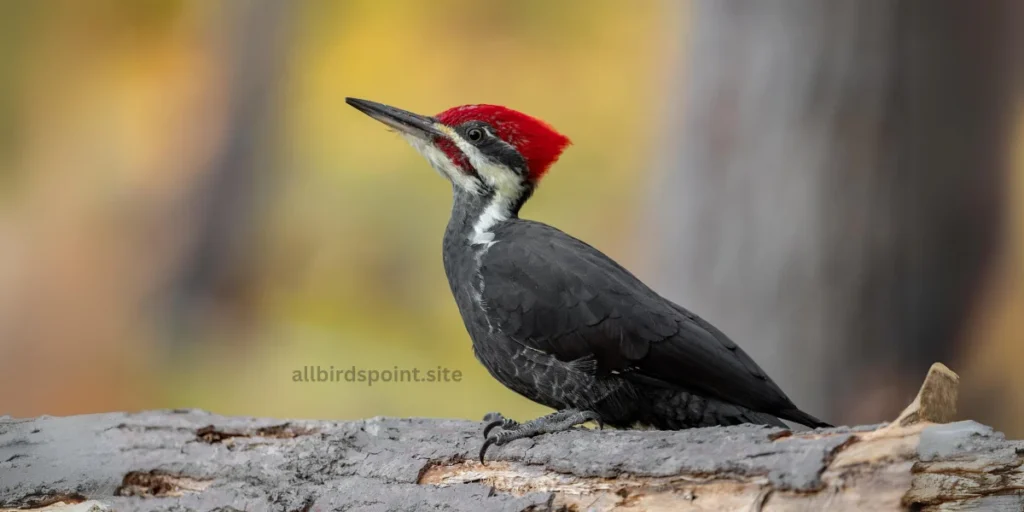
The woodpecker is a bird known for its ability to peck into trees with its strong beak. Woodpeckers are found in forests and wooded areas all over the world, and they are easily recognized by the sound of their pecking as they drill into wood.
What Does a Woodpecker Look Like?
Woodpeckers come in various sizes, but they all have strong, sharp beaks and stiff tail feathers that help them balance when clinging to trees. Many species have black, white, and red feathers, but their colors can vary depending on the species. The red-crowned head is a common feature in many types of woodpeckers.
Their beaks are strong and pointed, perfect for drilling into wood to find food or to create nests.
Where Do Woodpeckers Live?
Woodpeckers are commonly found in forests, woodlands, and parks where there are plenty of trees. They prefer areas with large trees because they use the trees for food, shelter, and nesting.
Some species of woodpeckers can live in different climates, from tropical rainforests to temperate forests, and some even live in urban areas where there are enough trees for them to find food.
What Do Woodpeckers Eat?
Woodpeckers mainly eat insects that live inside the bark of trees. They use their sharp beaks to drill into the wood and find bugs like ants, beetles, and larvae. Some species also eat tree sap, seeds, and nuts. Their strong beaks and long tongues help them pull insects out of deep holes in the tree bark.
Woodpeckers are also known for storing food. Some species will drill holes in trees and fill them with acorns or other nuts for later use.
How Do Woodpeckers Peck?
Woodpeckers have a special skill—they use their strong beaks to peck at tree trunks. This pecking helps them find insects hidden inside the wood, create nests, or communicate with other woodpeckers. They can peck up to 20 times per second without hurting themselves, thanks to their strong skulls and shock-absorbing tissues.
The sound of a woodpecker pecking is often a sign that they are nearby, searching for food or marking their territory.
How Long Do Woodpeckers Live?
Woodpeckers usually live for around 4 to 12 years in the wild. Their lifespan depends on their species and environment. They face dangers from predators such as larger birds, squirrels, and other animals that might try to steal their food or nests.
Woodpeckers’ Nesting and Breeding
Woodpeckers use their beaks to carve out holes in trees to create nests. They usually choose dead or softwood trees for this purpose. The female lays 3–5 eggs, and both parents take care of the eggs. After hatching, the chicks stay in the nest for several weeks before they are ready to fly.
Woodpeckers are excellent parents, feeding and protecting their chicks until they are old enough to survive on their own.
Woodpeckers in Nature
Woodpeckers are important for keeping tree-dwelling insect populations under control. They also help other animals by creating tree holes that can be used by other birds and animals for nesting.
The woodpecker is a fascinating bird with unique skills. Its ability to peck into trees and find food in hidden places makes it an important part of the ecosystem. Whether in forests or urban parks, woodpeckers are easily recognized by their drilling sound and striking appearance.
| Attribute | Description |
|---|---|
| Common Name | Woodpecker |
| Scientific Name | Family Picidae |
| Lifespan | 4 to 12 years |
| Beak Length | 1.5 to 3 inches (4 to 8 cm) |
| Diet | Insects, larvae, fruits, nuts |
Wryneck: The Bird That Twists Its Neck Like a Snake
Scientific Name: Jynx
Size: 6–7 inches (16–18 cm)
Weight: 30–45 grams (1.1–1.6 ounces)
Lifespan: Around 5–6 years in the wild
Diet: Mainly ants, other insects, and larvae
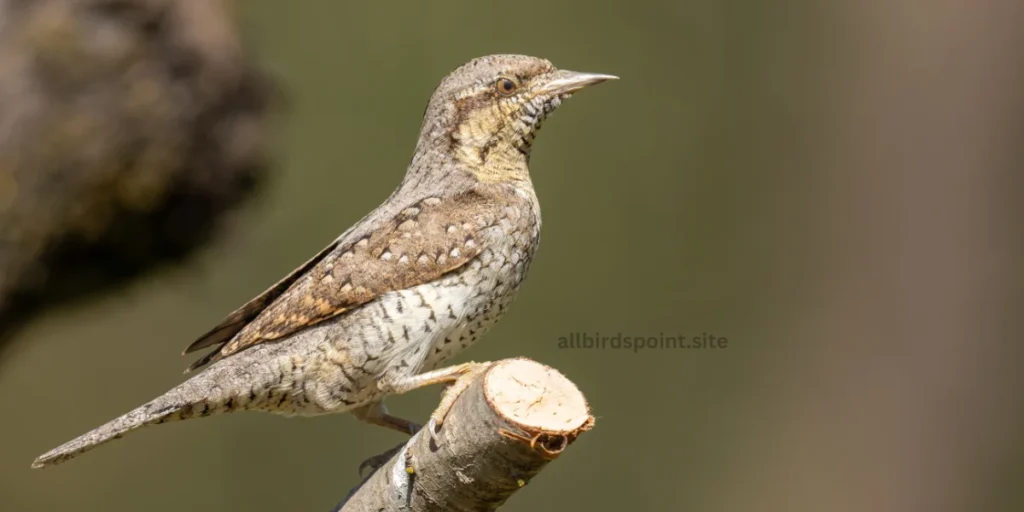
The wryneck is a unique member of the woodpecker family known for its ability to twist its neck in a snake-like manner when it feels threatened. Unlike most woodpeckers, wrynecks don’t peck into trees but are excellent at finding ants and insects in the ground.
What Does a Wryneck Look Like?
Wrynecks are small birds with brown and grayish feathers that help them blend into their surroundings, making them hard to spot. They have intricate patterns of brown, beige, and gray on their feathers, which give them excellent camouflage in woodland areas.
Their most remarkable feature is their ability to twist their necks in a way that resembles a snake. This is a defense mechanism they use to scare away predators.
Where Do Wrynecks Live?
Wrynecks can be found in open woodlands, orchards, gardens, and farmlands. They prefer places where there are lots of ants and insects for them to eat. They are migratory birds, spending their summers in Europe and Asia and flying to Africa during the winter.
Unlike most woodpeckers, wrynecks do not create holes in trees for their nests. Instead, they use old woodpecker holes or tree cavities to lay their eggs.
What Do Wrynecks Eat?
Wrynecks primarily eat ants, which they find on the ground. They use their long, sticky tongues to pick up ants and other small insects from the ground or from under the bark of trees. They also eat other insects like beetles and larvae when ants are not available.
Their feeding behavior is similar to that of a woodpecker, but they forage on the ground more often than in trees.
How Do Wrynecks Defend Themselves?
The wryneck’s most famous defense is its ability to twist its neck in a snake-like motion when it feels threatened. This behavior, along with hissing sounds, makes it appear more intimidating to predators. The twisting neck behavior is where the bird gets its name, “wryneck.”
This unique defense mechanism helps protect them from animals that might try to harm them.
How Long Do Wrynecks Live?
Wrynecks typically live around 5 to 6 years in the wild. They face dangers from predators like hawks and snakes, but their excellent camouflage and unique defense tactics help them avoid being caught.
Wrynecks’ Nesting and Breeding
Wrynecks prefer to use old woodpecker holes or natural cavities in trees for nesting. The female lays 7 to 10 eggs, and both parents share the responsibility of incubating the eggs and feeding the chicks once they hatch.
Unlike many other birds, wrynecks do not dig their own nests but instead take advantage of abandoned ones, making them adaptable nesters.
Wrynecks in Nature
Although they are related to woodpeckers, wrynecks are different because they don’t drill into trees. Their ground-feeding behavior and ability to twist their necks set them apart from other birds. Wrynecks help control insect populations, particularly ants, which makes them important in their ecosystems.
The wryneck is a fascinating bird with its twisting neck and insect-hunting skills. Its unique behavior and camouflage make it one of the most intriguing birds in the wild, and its role in controlling insect populations helps maintain a healthy balance in nature.
| Attribute | Description |
|---|---|
| Common Name | Wryneck |
| Scientific Name | Jynx torquilla |
| Lifespan | 4 to 8 years |
| Beak Length | 1.2 to 1.5 inches (3 to 4 cm) |
| Diet | Ants, beetles, larvae |
Jacana: The Bird That Walks on Water
Scientific Name: Jacanidae
Size: 6–12 inches (15–30 cm)
Weight: 50–200 grams (1.7–7 ounces)
Lifespan: Around 5–7 years in the wild
Diet: Insects, aquatic invertebrates, and small fish

The jacana is a fascinating bird known for its ability to walk on floating water plants like lily pads, earning it the nickname “Jesus bird” because it seems to walk on water. Jacanas are found in tropical regions around the world, especially in wetlands and lakes.
What Does a Jacana Look Like?
Jacanas have long toes and claws that help them walk on floating plants without sinking. Their bodies are usually brown or black with flashes of bright yellow, red, or green on their wings and face, depending on the species. The striking colors and graceful movements make them easy to spot.
Their long toes are their most distinctive feature, helping them spread their weight over large leaves and making them excellent walkers on the water’s surface.
Where Do Jacanas Live?
Jacanas are found in tropical wetlands, swamps, ponds, and lakes with lots of floating plants. They live in regions across Africa, Asia, Australia, and the Americas. These birds need shallow water with plenty of vegetation, like lily pads, to find food and make their nests.
They are often seen walking or running across these plants, searching for insects and small fish in the water below.
What Do Jacanas Eat?
Jacanas primarily eat insects, small fish, and aquatic invertebrates that live in the water or on floating plants. They also eat snails, worms, and sometimes the seeds or roots of plants. Their long toes allow them to move easily across the plants to hunt for food in the water below.
They are skilled foragers, using their long beaks to pick up small creatures from the water’s surface or beneath the plants.
How Do Jacanas Walk on Water?
The jacana’s extra-long toes and lightweight body allow it to walk across floating vegetation like lily pads without sinking. Their toes spread out widely, distributing their weight evenly across the surface of the plants. This unique adaptation helps them avoid predators and access food that other birds cannot reach.
Jacanas are also strong fliers, and when they need to move quickly or escape danger, they can take flight from the water’s surface.
How Long Do Jacanas Live?
Jacanas typically live around 5 to 7 years in the wild. They have to be careful of predators such as snakes, larger birds, and even humans who may disrupt their wetland habitats. However, their agility on the water helps them stay safe from many dangers.
Jacanas’ Nesting and Breeding
Jacanas build floating nests on water plants or close to the edge of the water. These nests are made from vegetation and are designed to float on the water’s surface. The female lays 3 to 5 eggs, and interestingly, in most species, the males take care of incubating the eggs and raising the chicks.
The male jacanas are responsible for protecting and feeding the young until they are ready to move around on their own.
Jacanas in Nature
Jacanas play a vital role in wetland ecosystems by helping to keep insect populations under control. Their ability to walk on floating plants allows them to access food in areas that other birds can’t reach. Unfortunately, habitat loss due to drainage of wetlands and pollution is a threat to many jacana species.
The jacana is an amazing bird with its unique ability to walk on water-like surfaces, colorful appearance, and fascinating behavior. Watching these birds gracefully move across lily pads is a beautiful sight, and they are an important part of the natural world’s wetlands.
| Attribute | Description |
|---|---|
| Common Name | Jacana |
| Scientific Name | Family Jacanidae |
| Lifespan | 6 to 10 years |
| Beak Length | 1 to 1.5 inches (2.5 to 4 cm) |
| Diet | Insects, seeds, aquatic plants |
Conclusion
These ten small birds with long beaks are a testament to the incredible diversity and adaptability of nature. Each bird has evolved its beak to suit its specific needs, whether it’s for feeding on nectar, catching fish, probing for insects, or foraging in water. Understanding these birds and their unique features helps us appreciate the complexity of their lives and the ecosystems they inhabit. Whether you’re a bird enthusiast or simply curious about nature, these fascinating birds with their long beaks are sure to capture your interest.
FAQs About Long-Beaked Small Birds
1. why some birds have long beaks?
Answer: Some birds have long beaks to access hard-to-reach food sources, forage more efficiently, and adapt to specialized diets. For example, hummingbirds use their long beaks to drink nectar from deep flowers, and kingfishers catch fish. Long beaks also help in nest-building and pollination, allowing these birds to thrive in their specific environments.
2. How do hummingbirds use their long beaks?
Answer: Hummingbirds use their long beaks to drink nectar from flowers. The beaks allow them to reach deep into blossoms, accessing the sweet nectar that provides energy.
3. Are long-beaked birds found in specific habitats?
Answer: Yes, long-beaked birds are found in various habitats suited to their needs, such as tropical regions, wetlands, shorelines, and areas near water bodies.
4. How do long beaks benefit birds like woodpeckers and hoopoes?
Answer: Woodpeckers use their long beaks to peck at wood for insects and nesting, while hoopoes use theirs to dig into the ground for insects and larvae.
5. Do long-beaked birds face any specific threats?
Answer: Yes, threats include habitat loss, pollution, climate change, and human interference. Conservation efforts are crucial to protect these birds and their habitats.
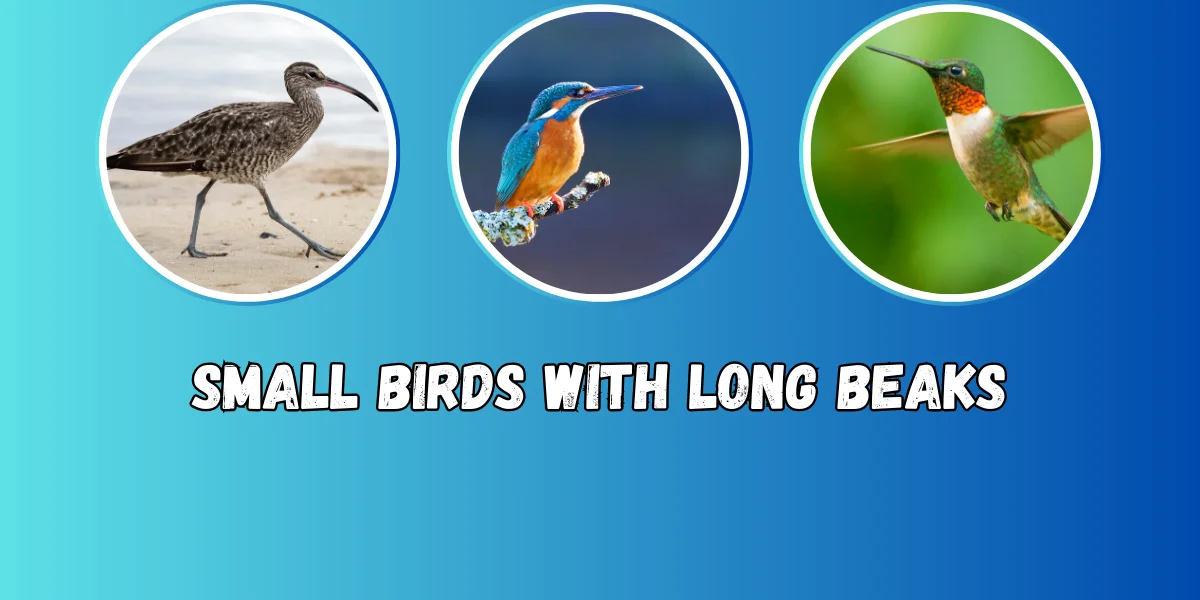
4reenz
ul0aih